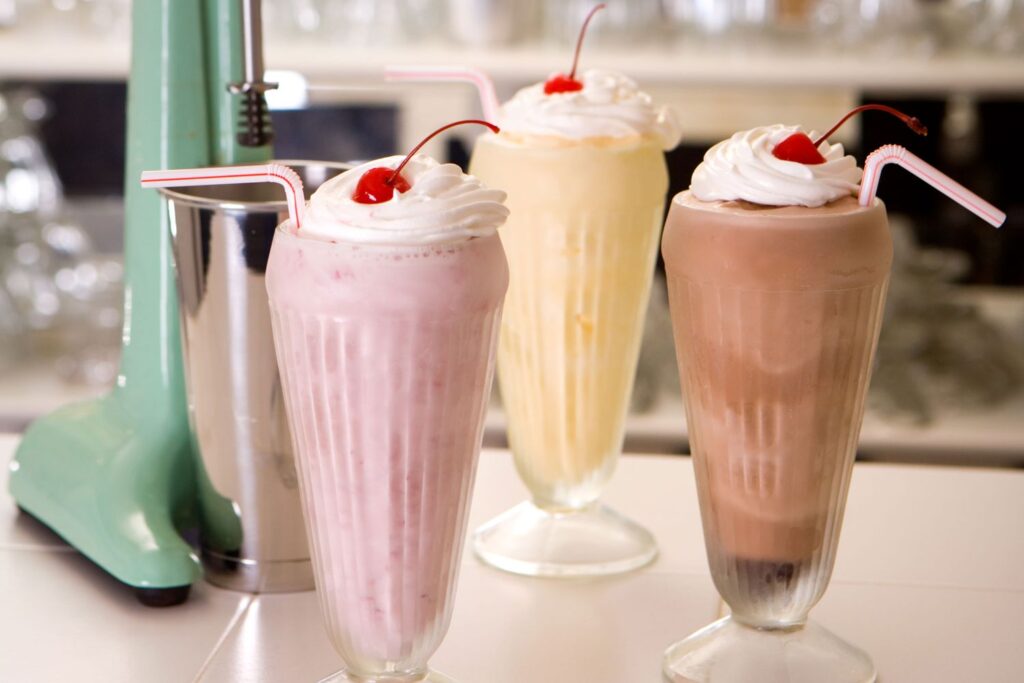Listeria Outbreak Milkshakes: The Dangerous Shake-Up You Didn’t Order
6 min read
Listeria Outbreak Milkshakes: The Dangerous Shake-Up You Didn’t Order
We all love a good milkshake, right? That thick, creamy, ice-cold drink that brings all the comfort in a single sip. But what happens when your delicious treat brings a little too much excitement? Enter the listeria outbreak milkshakes—a phrase you probably never wanted to hear. But hey, here we are. Let’s take a closer look at what’s really going on, why it’s a big deal, and how you can still enjoy your milkshakes without any unwanted surprises.
What Is Listeria, Anyway?
Before we dive into the listeria outbreak milkshakes, let’s get to know our enemy a little better. Listeria isn’t the name of a new hipster cafe—it’s actually a bacteria. And not just any bacteria, but one that can make you seriously sick. Listeria monocytogenes is the full name, but let’s just call it Listeria for short, shall we?
Unlike some bacteria that just hang out on your skin and do no harm, Listeria likes to go straight for your stomach—and it doesn’t mess around. When it enters your system through contaminated food, it can lead to a nasty illness called listeriosis. Trust me, no one wants to invite Listeria to their lunch table.
The Scoop on the Listeria Outbreak Milkshakes
So how did milkshakes—everyone’s favorite indulgence—get caught up in a listeria outbreak? It’s like a bad plot twist in your favorite movie. You’re enjoying your frosty drink, only to find out it’s carrying a villainous bacteria.
Listeria outbreak milkshakes usually happen when milk, ice cream, or any dairy products used in the shake become contaminated during production or handling. It could be the machinery, it could be the ingredients themselves, but once Listeria finds a way in, it’s like an uninvited guest who just won’t leave.
Imagine this: You go to your local diner, order that creamy vanilla shake, and take a long, satisfying sip. But lurking within that innocent sweetness is a bacteria ready to cause a whole lot of trouble in your digestive system. Now, that’s a twist no one ordered.
How Does Listeria Even Get Into Milkshakes?
Good question! And no, it’s not because Listeria bacteria just love milkshakes like the rest of us. The contamination usually happens at some point during the processing of dairy products. For example, a facility that makes ice cream might not be properly cleaned, allowing Listeria to hang out and make its way into your shake.
Picture a milkshake-making machine that’s just tired of cleaning days. It’s seen too many smoothies, frappes, and frozen delights. If the machine doesn’t get its regular spa treatment (aka proper sanitation), bacteria like Listeria start feeling right at home. From there, it’s just a hop, skip, and a jump into your favorite milkshake.
But hey, don’t start giving up on your frosty treats just yet. There are ways to stay safe, and we’ll get to that in a bit.
Why Listeria Loves Cold Things
You know how some people are always cold, even when it’s 70 degrees outside? Well, Listeria is like that. It thrives in cold environments, making it a real problem for foods like ice cream and milkshakes. Unlike many other bacteria that are killed off by freezing temperatures, Listeria thrives and waits for its chance to strike.
It’s almost like the bacteria went to survival school and got extra credit in “Living in the Cold.” So, if dairy products aren’t handled properly in cold environments, they’re more likely to become a host for this bacteria.
Symptoms of Listeriosis: When Your Milkshake Fights Back
If you’re unlucky enough to drink a contaminated milkshake, the symptoms of listeriosis can show up within a few days, or even up to 30 days later. Yes, Listeria plays the long game. Just when you think you’re in the clear, it hits you like a milkshake brain freeze that won’t go away.
The most common symptoms include:
- Fever (because who doesn’t love sweating out their favorite dessert?)
- Muscle aches (you didn’t even go to the gym!)
- Nausea and diarrhea (your body’s way of saying, “No thanks!”)
In more severe cases, especially for people with weak immune systems, it can lead to even scarier issues like meningitis or sepsis. So yeah, this isn’t just a case of your average stomach bug.
Pregnant women are also particularly vulnerable, as the infection can pass to their unborn baby, which can be extremely dangerous. So, if you’re expecting, it might be a good idea to skip that milkshake until you know it’s safe!
The Listeria Outbreak Milkshakes and Fast Food Chains
Now, let’s talk about the elephant in the room: fast food chains. Milkshakes are practically the bread and butter (or should we say “cream and sugar”) of fast food restaurants. It’s the perfect treat to wash down that burger and fries. But when a listeria outbreak is linked to a popular chain, it’s a PR nightmare.
Remember that time when a popular fast food chain had to pull its milkshakes from the menu because of a listeria scare? Talk about a buzzkill. For many businesses, handling the aftermath of a listeria outbreak is like cleaning up after an indoor food fight—it’s messy and nobody wants to do it.
But here’s the good news: once the problem is discovered, most companies will go into hyper-cleaning mode. So, next time you see your favorite shake back on the menu, you can probably breathe easy knowing it’s been scrubbed within an inch of its life.
How to Avoid Being the Victim of a Listeria Outbreak Milkshake
Alright, let’s be real—no one wants to end up on the wrong side of a listeria outbreak milkshake. So, how can you protect yourself and still enjoy your creamy frozen treats?
- Check for Recalls: Stay informed about any food recalls or outbreaks related to dairy products. A quick Google search or a visit to the FDA website can give you the latest scoop (pun intended).
- Look for Cleanliness: If you’re getting a milkshake from a restaurant or diner, take a peek behind the counter. Does it look clean, or are there questionable puddles of…something? If you’re not sure, it might be time to walk away.
- Eat Fresh: While ice cream and milkshakes are frozen, make sure you’re buying them from reputable places. Avoid milkshakes that have been sitting around for a while or made with products that aren’t stored properly.
- Consider Making Your Own: One way to avoid all the drama is to whip up your own milkshakes at home. Not only can you control the ingredients, but you can also ensure everything is clean and sanitary. Plus, you can add as many toppings as you want—extra sprinkles, anyone?
Wrapping It Up
At the end of the day, no one expects to order a listeria outbreak milkshake—and that’s the way it should be! But in our food-filled world, sometimes things go wrong, and milkshakes get caught in the crossfire. The key is to stay informed, keep an eye on cleanliness, and know the symptoms of listeriosis just in case.
So next time you sip on that frosty treat, take a moment to appreciate it—free from Listeria and full of the creamy goodness you deserve. Just remember, some surprises (like extra whipped cream) are better than others!



